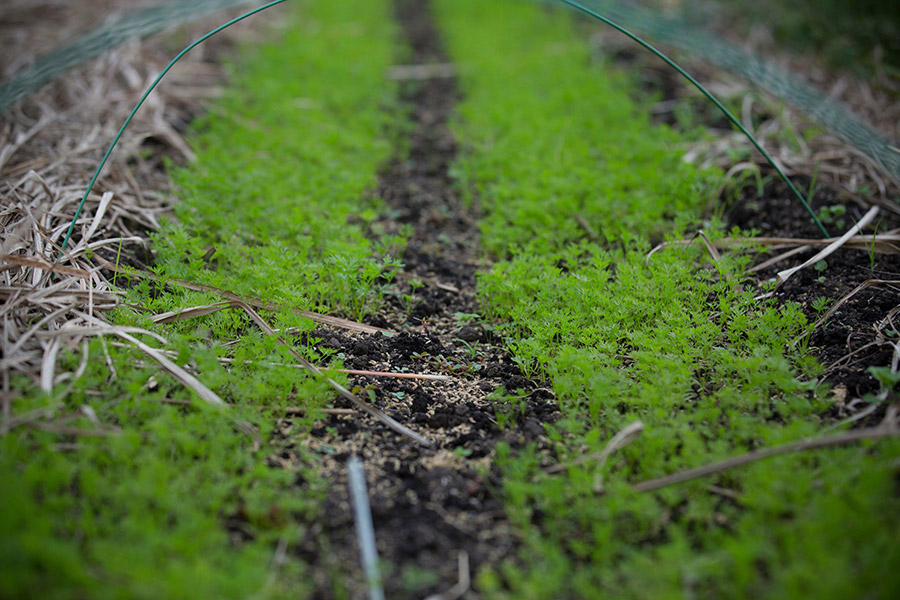
Terroir/テロワール
I was 20 when I began visiting Somlo Hill, a small volcanic wine region in Hungary. My old friend in those times often showed me around the local attractions. Once one time when we were approaching his winery halfway upon the hill, we stopped by 5 small wine cellars and tasted the fresh wine from the oak barrels. We noticed big differences in bouquet, minerals and acidity in each of the 5 cellars. Basically it was different soils and the local microclimates which determined each unique taste…This concept has inspired people to name and classify such interesting regions of the world as ‘terroirs’. Often particular names are given to each individual area, but in overall there is a classification starting from ordinary to the best spots called ‘premier and grand cru’.
15 years later the same idea grasped me when I first arrived in Higashi-Awakura. The southern facing landscape of the village has its large variation in soils (like volcanic ash, forest, sandy and Okayama red clay soils) coupled with distinct climatic areas; one spot yuzu (a Japanese citron) cannot survive the winter, in another it can become a large tree.
In my 0.3 hectare garden I enjoy growing on 3 particular terroirs, which give me the freedom to play with a large variations of plants, which I could not have dreamt of before. Consequently, in the main growing season I can easily count more than 100 plant varieties at the same time!
Amongst chefs, the word terroir has a rather extended and complex meaning. According to Pierre Koffmann, terroir refers to a local village’s region, in which everything is historically produced from eggs to vegetables and gathered or hunted in the wild (like wild mushrooms and river fish) which give a chef the strict repertoire to cook with. Michel Bras has been similarly looking for nearby producers and products to create a regionally authentic menu at the same time also experimenting with new ingredients which are also locally grown. For me, as a gardener it is important to understand and maintain the needs of local terroir characters, such as minerality, the seasonality and historical plant varieties in order to fulfill their full potential. Therefore in the process of achieving terroir taste a clear understanding is important between a chef and a gardener.
作物は、土壌や気候、地形など生育環境によって特有の風味を与えられます。それが「terroirs(テロワール)」。(もともとはワイン、コーヒー、茶などの品種における、生育地の地理、地勢、気候による特徴をさすフランス語)
私がテロワールに気づいたのは、20歳の時。オーストリア国境近くのワイン産地ショムローを訪れた時でした。友人が中腹にある小さなワイナリーへと案内してくれる途中に、私達は5カ所のワイン醸造所に立ち寄り、オーク樽から注がれた新鮮なワインを味わいました。そこで私は、同じブドウ品種のワインであるにもかかわらず、5つの醸造所それぞれで、香り、ミネラル、酸味に大きな違いがあることに気づいたのです。
それから15年後。この美作市・旧東粟倉村を初めて訪れた時、私の中でショムローでのあの記憶、あの感覚がよみがえったのです。兵庫県、鳥取県との境にある山間部の南向きの村には、多種類のテロワールが存在していました。火山灰、森林土、砂質土や粘土質の土といった異なる土壌。そして、同じ冬でも地域によって柚子が育たなかったり豊作だったりするといった独特の気候風土の違い。ここは、様々なテロワールを体験できる素晴らしい土地なのです。
今、私が耕している0.3ヘクタールの土地の中には、3つのテロワールがあります。このような好条件の土地は、望んでも得られるものではありません。この地で多種類の作物を品質良く育てるのが、私の何よりの楽しみです。ベストシーズンには、小さな土地に100種以上もの作物が育っているのです!
世界のトップシェフ達は「テロワール」を大切にしています。テロワールという言葉に対する考え方も様々で、複雑で幅広い。イギリスの名シェフ、ピエール・コフマン氏にとっては、テロワールとは地元の村の地域のこと。長い間ずっとその地域で生産されてきた卵や野菜、野生のキノコや川魚などの食材を使って、定番メニューを創り上げています。21世紀の仏料理界を代表するミシェル・ブラス氏は、自然から料理を創作する料理人と称され、その土地ならではのメニューを生み出すために近隣の生産者や食材を探し求め続けています。そして、地元で育てられる新しい食材も積極的に採り入れます。
私は、農業家としてこの地のテロワールを理解し、移り変わる季節に繊細に対応していきたいと思っています。私が育て収穫した作物で、シェフ達にテロワールの可能性を料理で十分に表現していただきたい。そして、料理を召し上がるお客様にテロワールの魅力を体験していただきたいのです。さらに、地元の伝統的な植物も大切に守りながら、テロワールに適した農業の質の向上を研究し続けたいと考えています。

